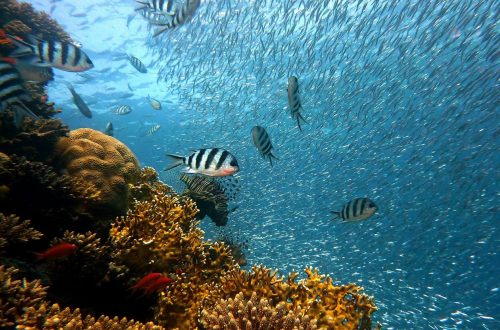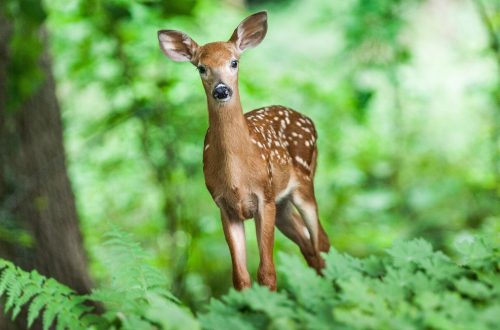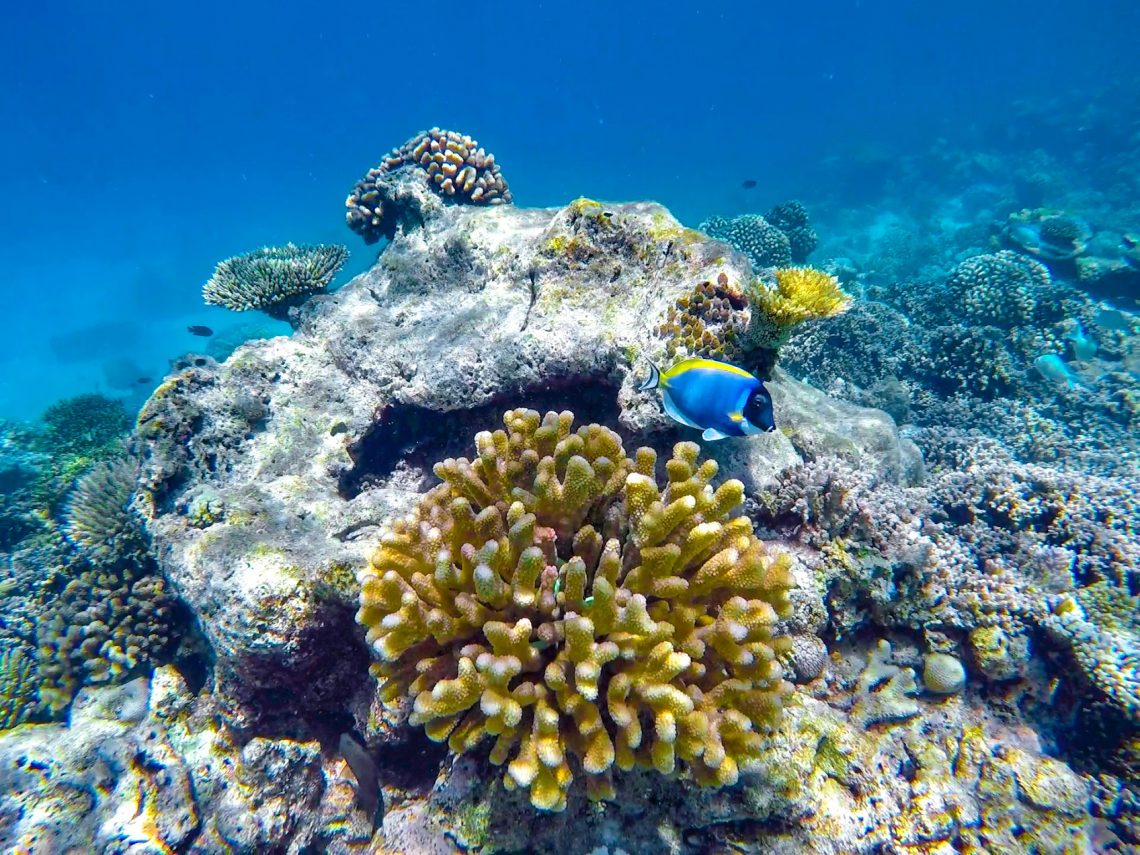
Maldives Wildlife: Vivid Reefs & Majestic Giants
Wildlife in the Maldives- What Can I Realistically Expect to See?
Part of that World
There is no doubt that the Maldives’ wildlife is a huge draw for tourists coming to visit the islands.
I suspect the emphatically terrestrial among us would be sceptical of claims of the rich biodiversity found in the Maldives.
Purely land-based humans will arrive on the islands and find there is little in the way of wildlife to be seen on the islands themselves.
But dive beneath the waves and you’ll enter a realm so alien from our usual, tellurian existence, you’ll hardly believe your eyes.
The best part is you don’t even need to scuba dive. All the wildlife discussed in this article is accessible to snorkellers on day trips. You may even get lucky and see some of it straight off the shore!
Realistic Expectations
As a self-styled amateur wildlife watcher, one of the things I find hardest when planning trips is discerning how realistic various wildlife encounters are when you are visiting with limited time, budget and resources.
Sure, this whale might be seen there SOMETIMES, but does that mean if I take a boat trip with its name attached that I have a 1% chance or a 99% chance of spotting it? Does an encounter require days in the wilderness with full camo and ration packs?
So here I am aiming to give you a run-down of the Maldives wildlife you are realistically likely to come across on your visit.
Easy to Spot
Common Wildlife in the Maldives
These are the species can say with certainty that you WILL see on pretty much any snorkelling trip in the Maldives.
Tropical Fish
This one is kind of a given. Of all the wildlife in the Maldives, few things are so synonymous with those turquoise blue waters than brightly coloured tropical fish diving into and out of anemones.
You’ll be spoilt for choice between banner fish, Moorish idols and surgeonfish, fusiliers, wrasse and angelfish.
Watch the parrotfish nibble on the corals and poop it back out in a long stream of sand. Spot the stunning Picasso triggerfish but keep your distance. They are extremely territorial and can issue a nasty bite!
One tropical fish you won’t find in the Maldives is Nemo. The Maldives has their own version of clownfish called an anemone fish. They look and act almost identically but are slightly more yellow. Keep an eye out for anemones and you might just catch a few hanging around.
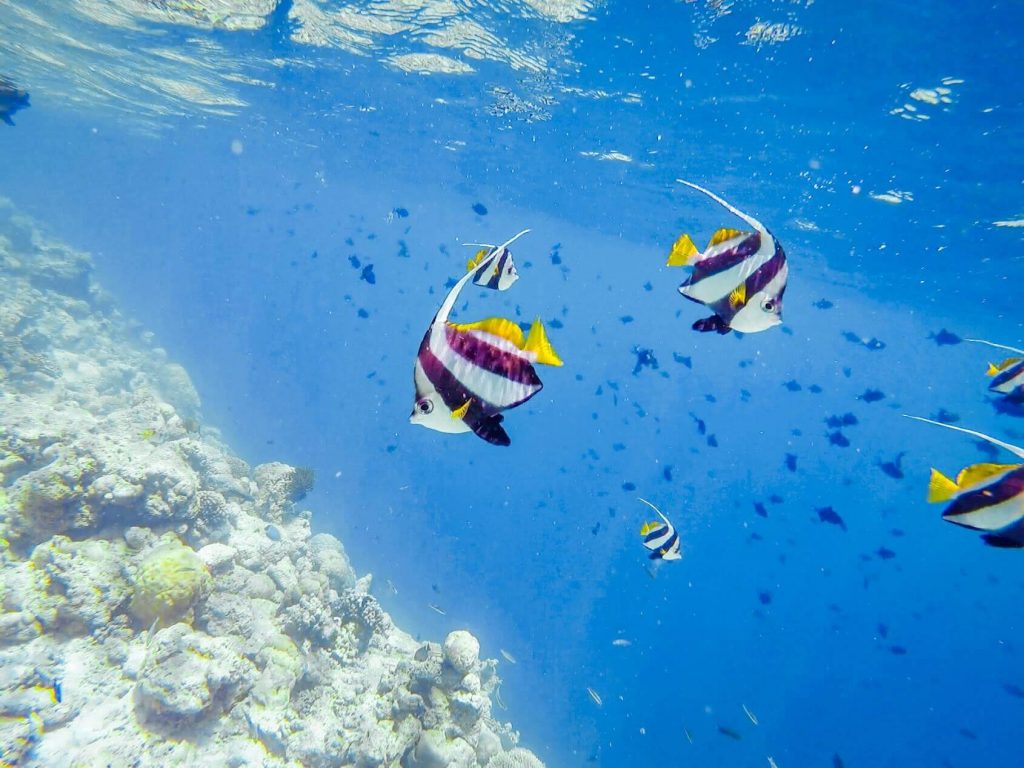
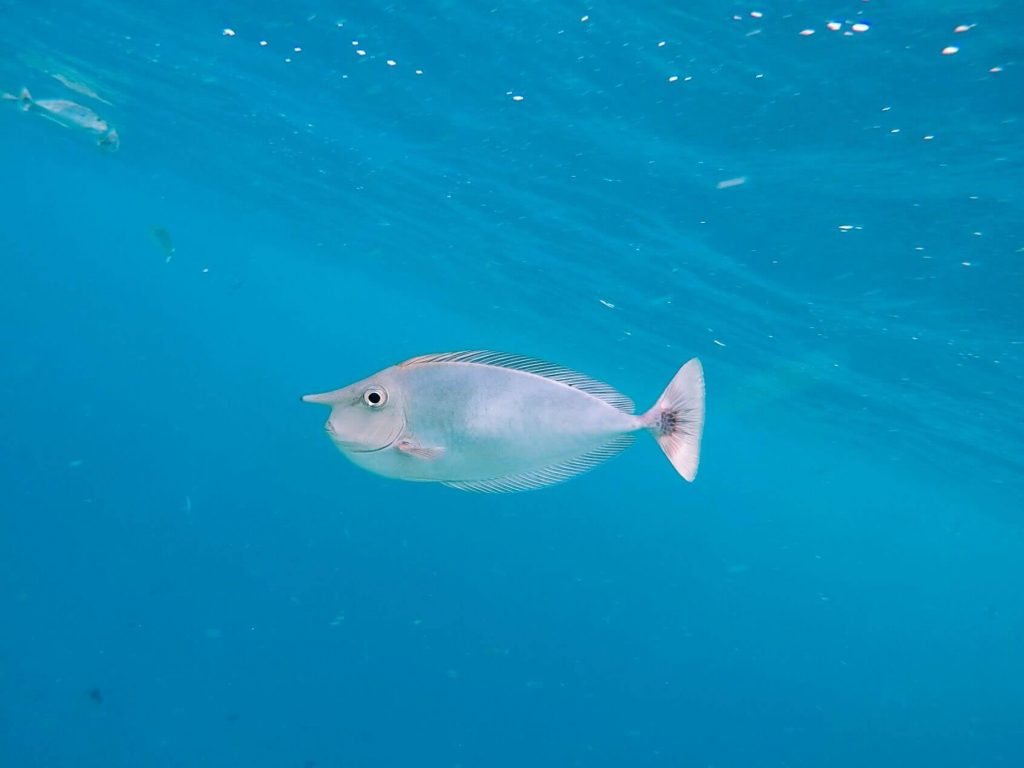
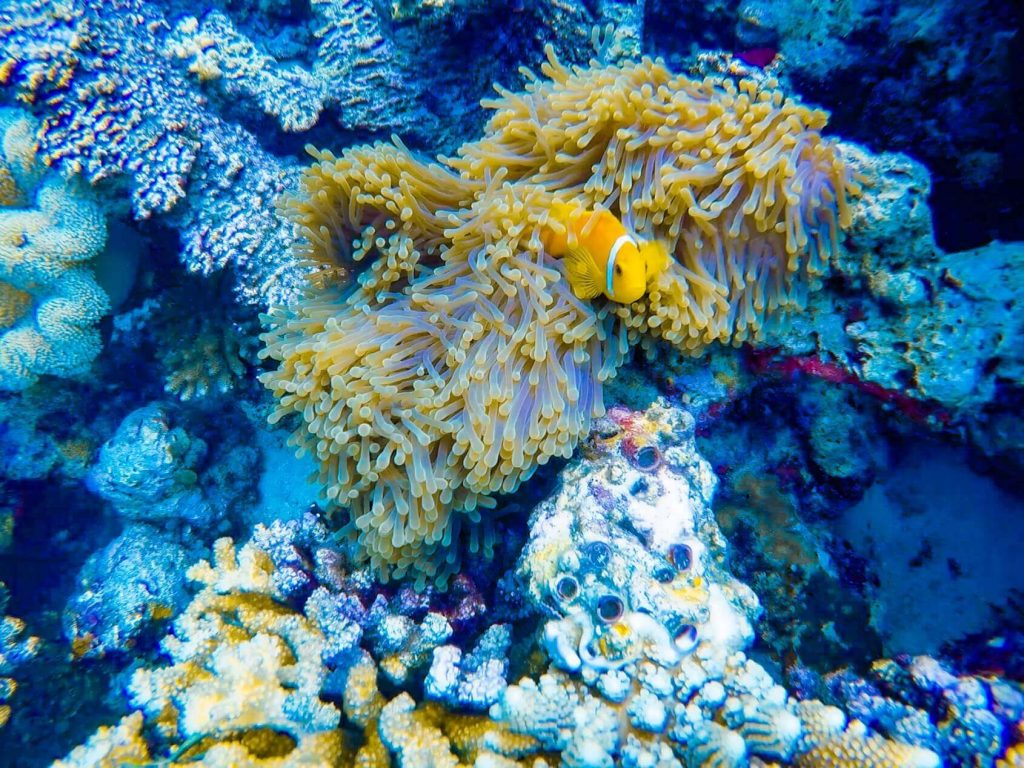
Coral
Neither animal, nor plant nor mineral, the coral is a curious creature.
It’s made of a calcium carbonate skeleton, covered in polyps (each with its own mouth parts) and coloured by colonies of photosynthesising cells zooxanthellae, existing together in symbiotic harmony.
The Maldives are home to a whole range of corals. My personal favourite is the brain coral, which looks, you guessed it, distinctively similar to a brain.
Be warned, however. What no one tells you, is that the ocean water filters out red and yellow wavelengths of light very quickly. The photos of spectacular coloured reef images you see in photos and on TV have been taken by flooding the area with artificial light and turning up the saturation of these colours when editing. Expect to find that it mostly looks blue and green!
In places, sadly, you may also see bleached corals, which is becoming an increasing problem in the Maldives.
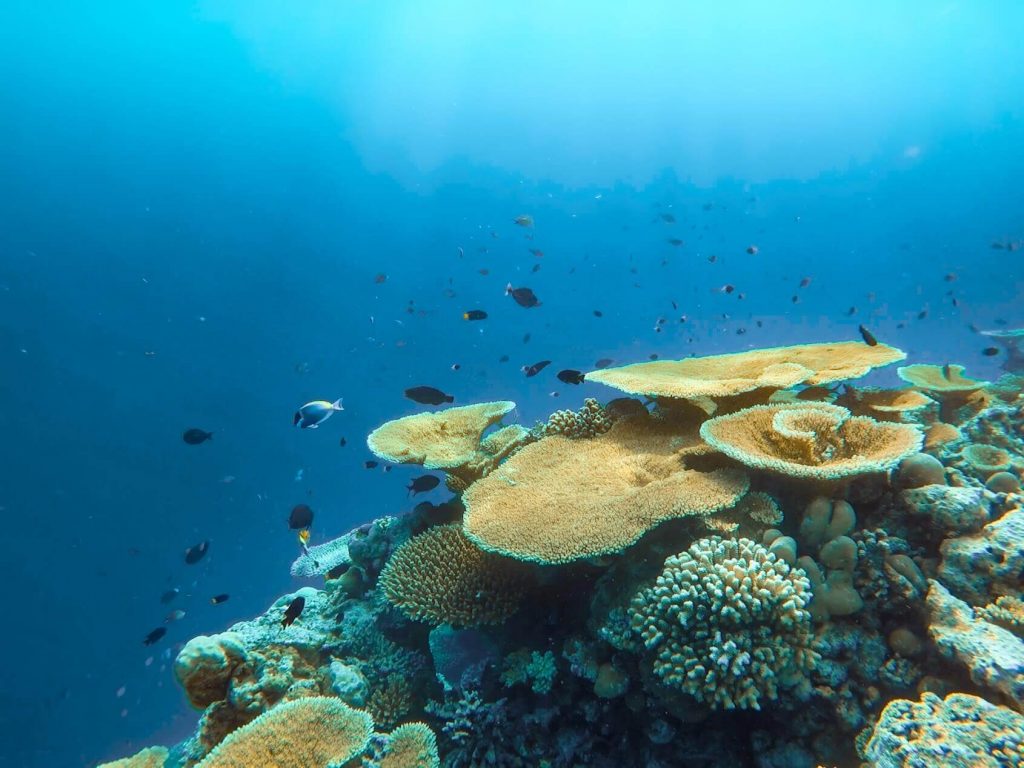
Good Chance to See
A Few Trips and Your Chances are High of Seeing this Wildlife in the Maldives
These are the things you’re not going to see on every single trip but within a few excursions, your chances are pretty good.
Turtles
Turtles are found in abundance in the Maldives across various reefs.
There is no one specific place to find them, though of course, there are hotspots. Your local dive school may be able to help you guide to good locations.
Keep an eye on the floor for these as they can sometimes be sleeping there. They are able to remain there for long periods of time.
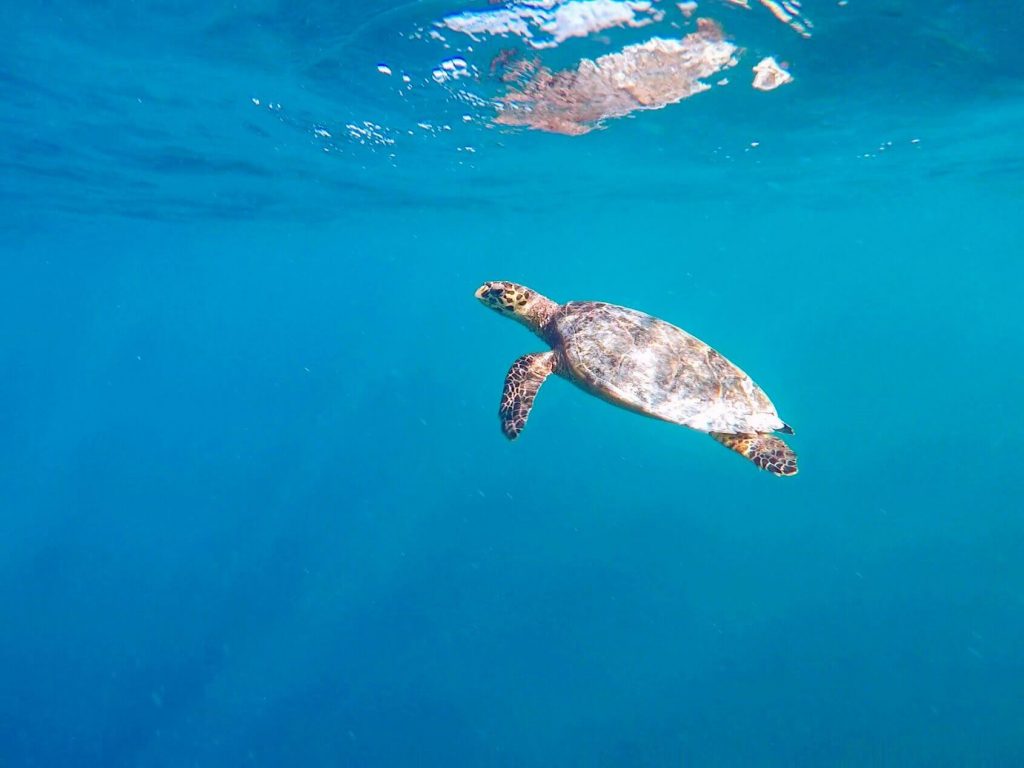
Reef Sharks
The Maldives is a great place to safely swim with sharks. The Maldives is home to a number of different species of sharks, three of which can be seen with reasonable regularity by snorkellers.
Reef sharks are the most common by far. Of those, you are most likely to find blacktip reef sharks. Black tip reef sharks are relatively small and found, you guessed it, on reefs around the Maldives.
These are what our diving instructor referred to as “normal sharks”. I had to laugh as I’m not sure any shark is really “normal” in the context of my life, but it shows you how commonly they are seen. Whilst the reefs are by no means teeming with sharks, you should probably spot them if you take a few excursions. They can also sometimes be seen in the shallow shore waters. I’ve even known people to spot them around the famous over-water bungalows!
If you’re particularly interested in swimming with sharks in the Maldives, I’ve created an article just for you. Click here to learn more.
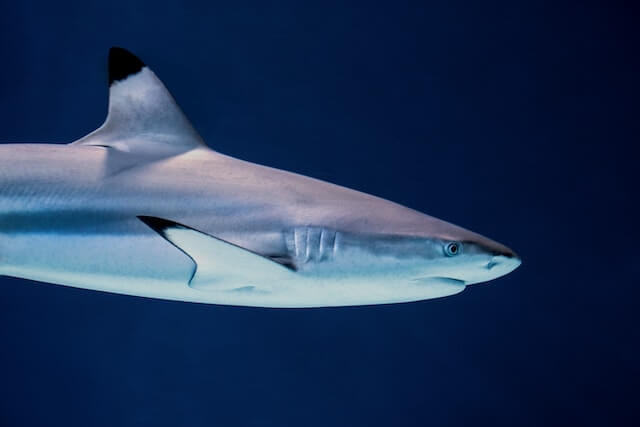
Sting Rays
Again, sting rays are a common sight in the Maldives.
We saw them in three different locations, including in the waters around Male (near the market harbour). Steve Irwin might have inadvertently left them with a reputation as killers but rest assured, they’re not interested in you as long as you don’t poke them!
These are less often spotted on reefs so if you are wanted to swim with them, a dive centre might again be a good option for you.
Dolphins
I was surprised at the number of dolphin sightings we got on our trip!
Thoughts of Maldives wildlife do not usually conjure up images of dolphins but there are plenty there to watch play among the waves.
Most of our sightings came in the Male atoll but I saw our hotel on Dhigurah (link coming soon) advertising dolphin watching excursions.
Sightings were regular but they didn’t seem to be everywhere. If dolphins are a priority for you, I recommend you do your research ahead of time to check whether this is something your hotel offers.
Take a look at my article on the ethics of swimming with dolphins before jumping in the water, however.
Actively Seeking
Maldives Wildlife Encounters to Seek Out
The Maldives offers some of the most spectacular sightings in the marine world. Giants roam its waters. This is the stuff that bucket lists are made of. A dream come true in a single glimpse. But if you want to catch them in action, you probably need to plan for it.
This is the Maldives wildlife you won’t simply stumble across. You’ll need to go looking.
Whale Sharks
The whale shark is perhaps the most charismatic of the ocean giants.
Gliding through the water, mouths open, the filter water in hopes of finding krill to snack on. The biggest fish in the world, they can grow up to 10m in length. Swimming beside one can be exhilarating and humbling in equal measure.
Unusually, whale sharks can be found year-round in the Maldives. The South Ari Atoll and Hanifaru bay are both hotspots for this. As a result, we were able to utilise a trip to local island, Dhigurah, to spot whale sharks.
If you’re interested in learning more, further detail can be found in shark article (a shark-ticle, if you will), here.
I will say, as a slight warning, that I was not altogether ethically comfortable with my experience with the whale sharks. When the shark has been sighted, a whole raft of boats appears, some moving at high speed.
I urge you to avoid the use of speed boats in the areas where whale sharks are known to be. Boat strikes can cause irreparable damage to these animals.
In terms of the number of people, if I were doing this again, I might ask ahead of time what measure are put in place to ensure that the sharks are not overwhelmed. They do at least have the option to escape into deep water where most of us cannot access them.
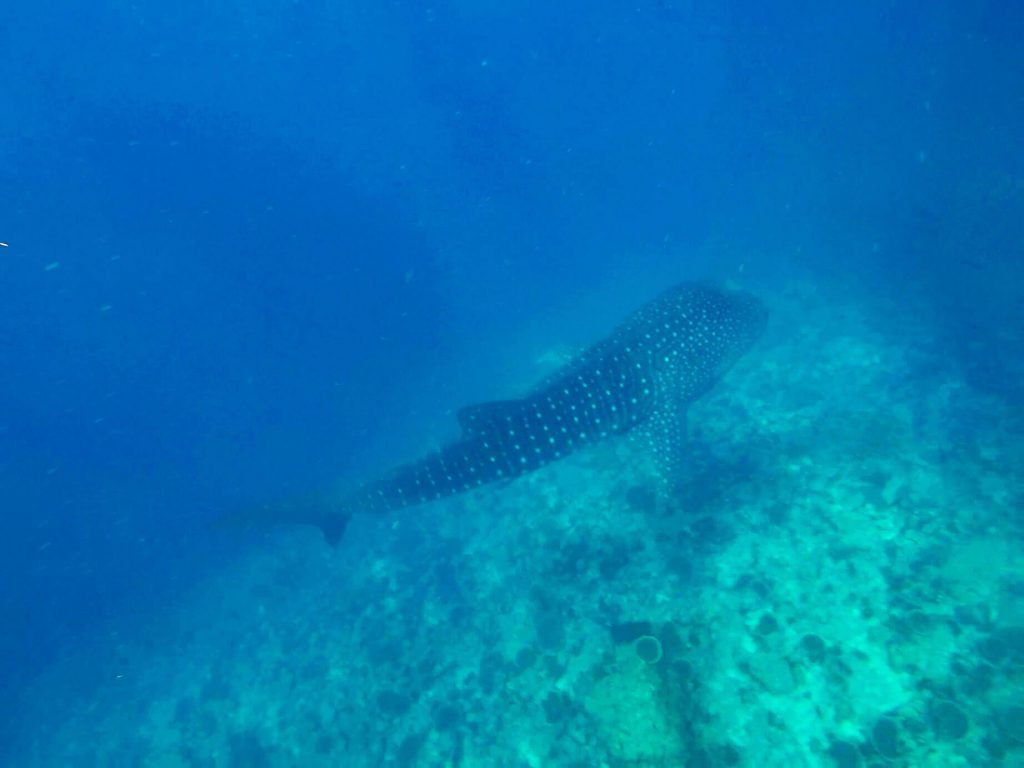
Manta Rays
Manta rays are also found year-round in the Maldives. Hanifaru bay is, again, renowned for sightings and they were also advertised in the South Ari Atoll.
Again, this is a case of checking with your specific hotel before you go and seeing what they offer.
Nurse Sharks
One of the highlights of the Maldives wildlife for me was the opportunity to swim with the tawny nurse sharks.
These grow to around 3m and can be found in large numbers. They swim quite peacefully alongside you and seem curious to check you out.
Again, these aren’t found everywhere, however. The Vaavu atoll is home to a strong population and is probably your best chance to see these animals.
And another link to more information from the shark-ticle can be found…here!
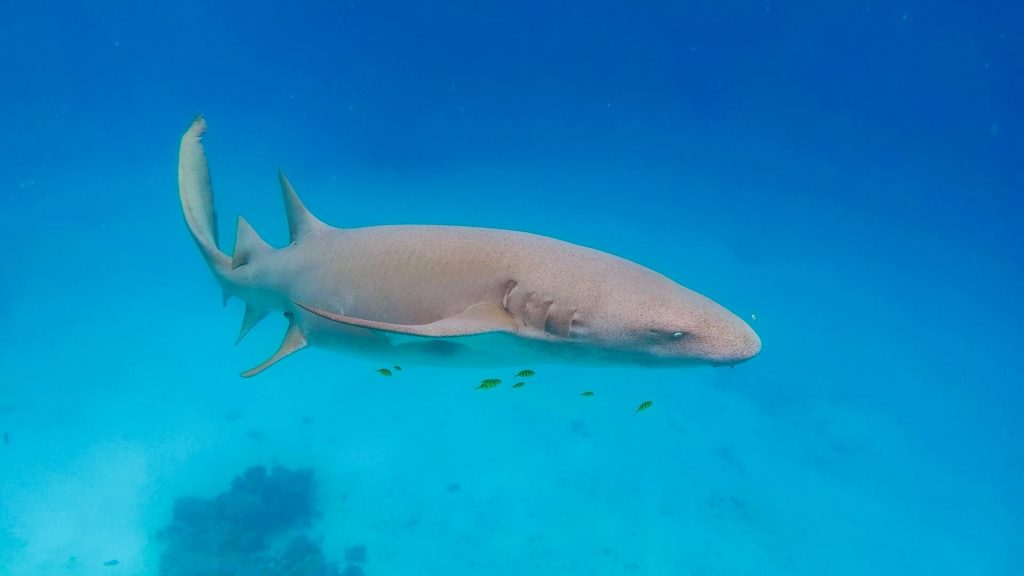
If You’re Lucky
Maldives Wildlife You’re Unlikely to Spot
The Maldives wildlife is so extensive you’re unlikely to leave wishing for more.
I could only think of one animal you might go expecting to see and be disappointed.
Whales
If it’s whale watching you’re after, you’ll be disappointed.
Various species of whales do live here and a sighting is not impossible, but it is improbably. Whale sightings are rare. You are unlikely to find an excursion aiming to find them.
You can always go with your fingers crossed and take it as a bonus if you spot one!
Honourable Mention
Before wrapping up, I just want to give some airtime over to an unexpected highlight- the flying foxes.
I said that the land areas lack biodiversity but seeing these mammals in the skies and the treetops was quite beautiful.
They are found widely across most islands and require no particular skills or excursions to spot. Just take a walk and keep an eye on the sky! The distinctive bat wing shape is a giveaway.
Conclusion: Accessible, Abundant and Out of This World
The Maldives wildlife was without question, some of the richest I have encountered. A quick dip beneath the waves with a snorkel is all you really need.
Selecting what you most want to see and planning accordingly is the best way to see all that you want. Not everything is found everywhere. Your hotel offering will give you a good guide as to what is available in your area. Dive schools are a great source of local expertise for your questions.
It’s a small country, but each atoll has something different to offer. The Eastern side is different to the Western side depending on time of year (they have different monsoon seasons). In general, there is more wildlife to be found in the south. Most of the fancy resorts are in the north.
Set your expectations high, but be pleased with what you do see, not disappointed by what you don’t. Mind the coral. Take your litter home. Be mindful of your impact. But have fun and enjoy the spectacular Maldives wildlife.



